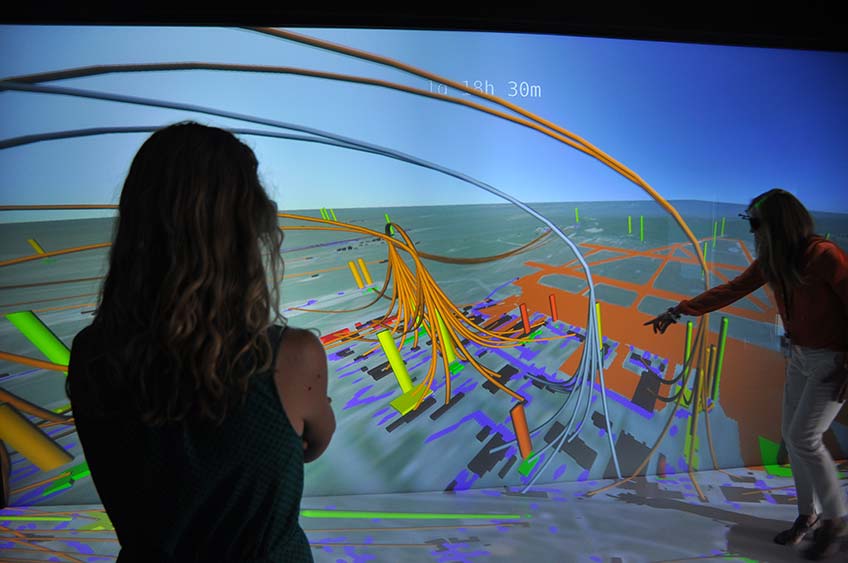Quantifying the Value of Resilience During Disruptive Events

With increased numbers of natural disasters in recent years, improving the resilience of energy systems is essential to utilities and communities. Researchers at the National Renewable Energy Laboratory (NREL) have developed a framework for quantitatively modeling resilience metrics to show communities and utilities the benefits of investing in resilience strategies for the grid.
“We’ve heard from federal agencies, states, local governments, tribes, other countries, and industry professionals that there is a need for more secure and resilient power systems,” said Eliza Hotchkiss, co-principal investigator of the resilience research project and co-author for two forthcoming publications on quantifying resilience metrics. “Understanding the nuances of power system vulnerabilities and how to finance resilience solutions has been a large barrier for implementing resilient systems. Our research is trying to overcome those barriers through robust resilience science and energy modeling to further knowledge in this space.”
Although utilities understand how much resilience measures cost (e.g., the price of replacing a power line after a storm), the benefits of resilience are more challenging to quantify. To overcome this constraint, NREL researchers have released two publications that focus on implementing, testing, and validating resilience metrics and analysis approaches in energy sector models.
As detailed in an IEEE Systems Journal article, “Integrating the Value of Electricity Resilience in Energy Planning and Operations Decisions,” the NREL authors refine this resilience analysis framework through two case studies. The first case study examines the framework for a grid-level operator, while the second considers a campus, base, or building-level operator. The authors analyze how the quantified value of lost load during a disruption and its impact on customers can help officials better forecast their resilience needs.
In a recently published NREL technical report, authors detail a resilience analysis framework for five different energy sector models originally built at NREL. The framework simulates power interruptions and resilience metrics in these models at varying scales to help utilities and communities inform their resilience investments and planning. Examples of resilience metrics can include the number of hours that customers are without power, the number of hospitals or fire stations without power, the loss of business and community economic revenue, and the loss of utility revenue. Instead of focusing on evaluating one resilience metric, which would not fit all disruption circumstances, this NREL-developed framework provides a methodology to determine the value of multiple resilience metrics over time and at scalable simulations.
“In the face of increasing long-duration outages with broad economic and social impacts, strengthening the resilience of the power system is more important than ever,” said Kate Anderson, co-principal investigator of the project alongside Hotchkiss. “For system owners and operators tasked with weighing the cost of a resilience investment against the benefit it provides, understanding the value of resilience is important for informing public and private investment decisions in power systems resilience.”
For more information on this project or resilience research at NREL, contact Eliza Hotchkiss or Kate Anderson.
Last Updated May 28, 2025
